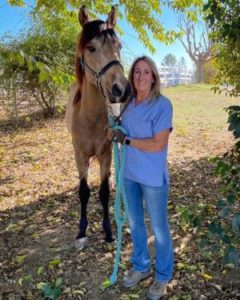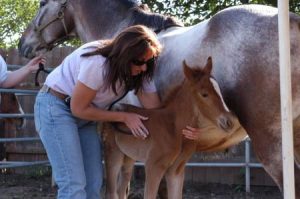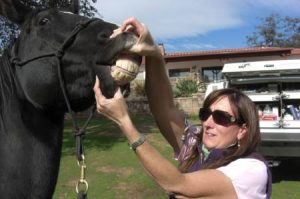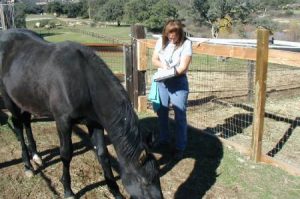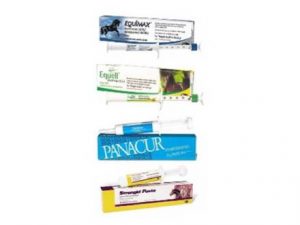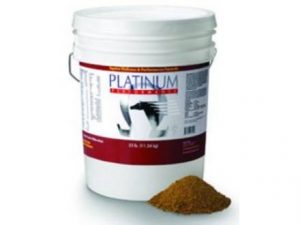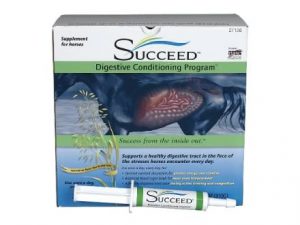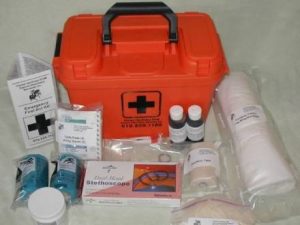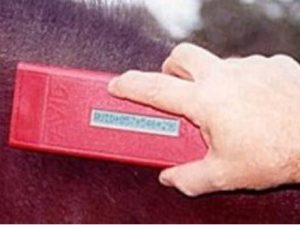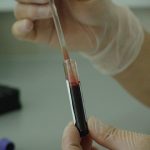PREGNANY AND FOALING

CARE OF THE MARE DURING PREGNANCY
During the last month of pregnancy, the following considerations are important:
- Mares confined to a stall or another small area should be regularly given the opportunity for moderate exercise.
- Feed the mare a complete, balanced ration. Additional nutrition is necessary in the last several months of pregnancy.
- Be sure your mare is up to date on immunizations recommended for your area. All mares should receive rhinopneumonitis vaccine at 5,7 and 9 months of gestation. Booster immunizations during pregnancy also increase the level of antibodies in the mare's colostrum.
- At 2-4 weeks before the mare is due to foal, we will collect a blood sample to test the mare's blood for the factor causing neonatal isoerythrolysis (foal icterus). If the mare tests positive, the foal should not be allowed to nurse the mare for approximately the first 24 hours of life. That foal should receive colostrum from another source, while the mare is milked out for the first 24 hours.
- In conjunction with the regular deworming program, pregnant mares should be dewormed approximately 30 days before their due date.
- The last 3 items above can be done during the same veterinary appointment.
- The foaling area should be quiet, with only 1 or 2 people and no other animals in attendance.
- Signs of parturition (foaling) vary greatly. Watch for a tight udder, "wax" on the teats, dripping of milk, a relaxed vulva and pelvic ligaments (softening and hollowing of the area around the tailhead), extreme nervousness and sweating.
- When the first stage of labor begins (indicated by nervousness, sweating, getting up and down, etc), you can apply a tail bandage. Second-stage labor is indicated by rupture of the placental membranes ("breaking water"). Once the water breaks and the amnion (whitish translucent foal sac) appears, foaling usually proceeds reasonably fast.
- Protrusion through the vulva of one front foot/ then the other front foot and the nose indicates that the foal is in the proper position and should have little trouble being born. Delivery can take a few minutes to half an hour. Any other presentation of the foal could indicate problems.
- Call Dr. Garfinkel immediately if you suspect any problems before or during delivery.
- As soon as the foal is passed, clean the foal's mouth and nostrils of any mucus and/ or foreign material, and observe for normal breathing.
- After delivery, encourage the mare to lie quietly for a few minutes so that all the remaining blood in the placenta half been transferred to the foal. The umbilical cord normally ruptures spontaneously when the mare gets up or when the foal struggles to get up.
- After the umbilical cord ruptures, string can be used to tie up the amnion (foal sac) at the mare's vulva, to keep the mare from stepping on it, and to add weight to aid expulsion of the placenta. The placenta is usually expelled within a few minutes to a few hours after delivery of the foal. After it is passed, the placenta should be collected and kept away from dogs and direct sunlight until it can be examined.
- Dip the stump of the foal's umbilical cord into disinfectant in a small jar or apply it to the stump with a swab. Disinfectant should be applied several times in the first 12 hours.
If the placenta (fetal membranes) have not passed from the mare's uterus within 4 hours after foaling, the uterus can become inflamed and/ or infected. Retained placenta can also lead to laminitis and, in rare instances, shock and death. Do not pull on the hanging placenta; this can result in serious problems.
In some mares, the placenta is not evident and it is difficult to determine whether the placenta has been retained or has been passed normally. Signs of a retained placenta include a small red to black tag seen occasionally at the vulva, or lack of an expelled placenta in the foaling area.
Mares that previously have had a retained placenta after foaling may have the problem again in future foalings. Approximately 2-10% of broodmares repeatedly have this problem. Treatment may be required to help reduce permanent fertility problems.
- The foal should stand within 1 hour after birth. During this time, the mare's licking and the foal's struggling to rise stimulate the foal's neuromuscular system.
- Observe the foal for a proper sucking reflex. If the foal has not nursed after 2 hours, you may have to provide assistance. Maiden mares may need to be held so that they will not move away or kick the foal during its attempts to nurse. Keep all human intervention to the absolute minimum to facilitate bonding of the mare and foal.
- The foal should have passed the meconium (green-colored first manure) soon after nursing. If you observe the foal straining, an enema may be required.
- A blood sample should be collected 8-12 hours after nursing to check the foal's antibody levels. A plasma transfusion may be necessary if the foal's antibody levels are abnormally low.
- Antibodies in the mare's colostrum (first milk) provide immunity for the foal during the first 2 months of life. After this time, immunization should begin using the vaccines recommended for our area.
- Begin a regular deworming program early in the foal's life.
- After 2-8 weeks of nursing, the foal will require solid food. Begin a supplemental feeding program at that time. Creep feeders can be used, or the mare and foal can be separated at feeding time to encourage the foal to eat. By weaning time, the foal should be healthy and eating well, and should be ready for independence.
- You observe any abnormalities during your mare's pregnancy.
- You observe any abnormalities in the mare during or after foaling.
- Your foal is not on its feet within 1 hour after birth and/ or is not nursing within 2hours.
- You wish to discuss your foal's immunization and deworming program.

